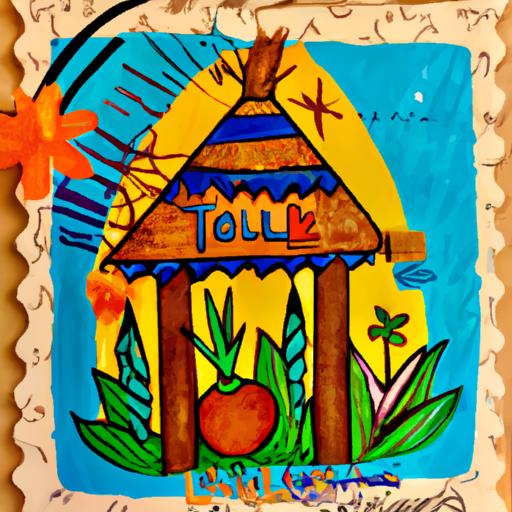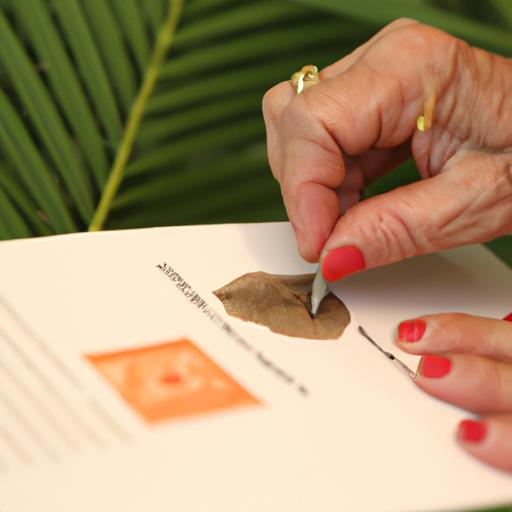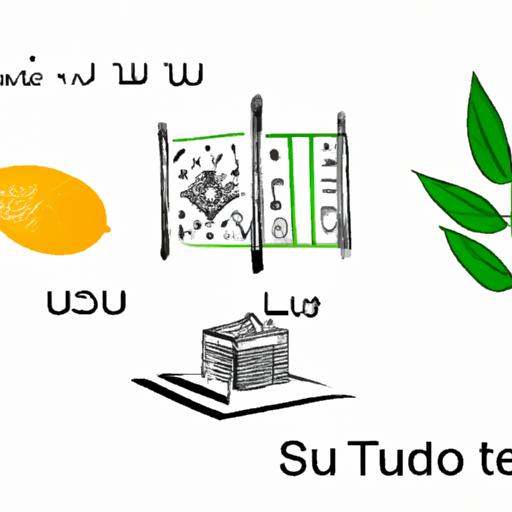Israel Childhood Memories Sukkot Stamp Translation – Preserving Cultural Heritage

Introduction

Sukkot, a joyous Jewish festival celebrated in Israel, holds a deep cultural significance that nurtures cherished childhood memories. As we delve into the enchanting world of Sukkot, we uncover an emblem of Israeli heritage, the Sukkot stamp. In this article, let’s embark on a captivating journey to explore the essence of Sukkot and the translation of this symbolic stamp.
The festival of Sukkot, also known as the Feast of Tabernacles, is a time-honored tradition in Israel that commemorates the forty years of wandering in the desert after the exodus from Egypt. It is a period of reflection, unity, and gratitude, where families come together to build and dwell in temporary shelters called sukkahs. These sukkahs, adorned with vibrant decorations and fragrant fruits, evoke a sense of nostalgia, reminiscent of the carefree days of childhood.
Amidst the vibrant festivities, the Sukkot stamp stands as a testament to Israel’s rich cultural heritage. The stamp not only captures the essence of Sukkot but also serves as a gateway to preserving cherished memories and traditions. Its design encapsulates the vibrant colors, intricate patterns, and symbolic elements that make Sukkot an extraordinary celebration. However, to truly appreciate its significance, we must unravel the translation of the Sukkot stamp, as it holds the key to unlocking the cultural nuances embedded within its design.
Stay tuned as we embark on a captivating exploration, unraveling the meaning behind the Sukkot stamp’s translation. Join me in understanding the challenges faced in accurately translating its Hebrew text and the importance of preserving Israel’s cultural heritage through this linguistic journey. Let’s navigate the vibrant world of Sukkot and the captivating tale hidden within the Sukkot stamp’s translation.
Continue reading to discover the enchanting symbolism and cultural references woven into the Sukkot stamp’s translation.
Sukkot: A Celebration of Childhood Memories in Israel

A. Exploring the Cultural Significance of Sukkot in Israel
Sukkot, known as the “Festival of Booths,” holds immense cultural significance in Israel. It is a cherished time when communities come together to commemorate their ancestors’ journey through the wilderness. The festival symbolizes the unity and resilience of the Jewish people, emphasizing the importance of gratitude and appreciation for nature’s bounties.
During Sukkot, Israelis construct sukkahs, temporary shelters adorned with natural materials such as branches, leaves, and fruits. These sukkahs serve as a reminder of the humble dwellings their ancestors lived in during their desert wanderings. They also represent the temporary nature of life and the importance of appreciating the present moment.
B. How Sukkot Fosters Childhood Memories and Nostalgia
Sukkot is a time of joy and celebration for people of all ages, but it holds a special place in the hearts of children. The festival’s vibrant atmosphere, filled with laughter, music, and delicious food, creates a magical ambiance that lingers in their memories for a lifetime. From helping their families decorate the sukkah to participating in traditional songs and dances, children actively engage in the festivities, forging lasting connections to their cultural heritage.
Moreover, Sukkot offers a unique opportunity for families to bond and create cherished memories together. Building and decorating the sukkah becomes a collaborative effort, fostering a sense of unity and teamwork within the family unit. Sharing meals and stories under the sukkah’s shelter strengthens family ties and imparts valuable life lessons about gratitude, resilience, and the importance of community.
Sukkot’s ability to evoke nostalgia and bring back cherished childhood memories is unparalleled. The sights, sounds, and scents of this festive season transport individuals back to a time when life was simpler, and the world seemed filled with wonder. Whether it’s the aroma of freshly baked challah or the colorful decorations adorning the sukkah, Sukkot stirs a profound sense of nostalgia that reverberates within the hearts of all who partake in its celebrations.
Continue reading to uncover the remarkable symbolism and cultural heritage encapsulated in the Sukkot stamp, a tangible representation of childhood memories and Israeli traditions.
The Sukkot Stamp: A Symbol of Israeli Heritage
A. Introduction to the Sukkot Stamp and its Design
The Sukkot stamp, an exquisite piece of artistry, serves as a visual representation of the cultural heritage deeply ingrained in the fabric of Israel. Designed with meticulous attention to detail, the stamp encapsulates the essence of Sukkot, captivating viewers with its vibrant colors and intricate motifs. From the moment it graces an envelope or a collector’s album, the Sukkot stamp becomes a gateway to the rich tapestry of Israeli heritage.
B. Significance of the Stamp as a Representation of Israeli Heritage
The Sukkot stamp holds immense significance as it embodies the essence of Israeli heritage. It serves as a potent reminder of the traditions, values, and shared experiences that unite the diverse Israeli population. The stamp’s design encapsulates the cultural motifs, architectural elements, and natural beauty associated with Sukkot, fostering a sense of pride and connection among Israelis.
Beyond its aesthetic appeal, the Sukkot stamp serves as a tangible symbol of the nation’s identity. Its presence on letters, packages, and collectors’ items carries the weight of Israel’s cultural heritage, transcending borders and bridging gaps across time and space. Each time the stamp is affixed or displayed, it reinforces the collective memory and shared experiences that make Israel a vibrant mosaic of traditions and customs.
C. The Role of Stamps in Preserving Cultural Memories
Stamps, like the Sukkot stamp, play a crucial role in preserving cultural memories for future generations. They serve as tangible artifacts that capture and commemorate significant events, cultural celebrations, and historical milestones. Stamps provide a window into the past, allowing us to revisit and appreciate the customs and traditions that shape a nation’s identity.
Through the act of collecting stamps, individuals not only engage with their own cultural heritage but also gain a broader understanding of diverse cultures around the world. Stamps become a vehicle for education, sparking curiosity, and fostering cross-cultural appreciation. They serve as a testament to the power of symbols and imagery in preserving and transmitting cultural legacies.
In the following sections, we will unravel the translation of the Sukkot stamp, further deepening our understanding of its cultural significance and the importance of accurate translation in preserving Israel’s rich heritage. Join me as we decode the hidden meanings behind the Hebrew text, exploring the symbolism and cultural references embedded within the Sukkot stamp’s translation.
Continue reading to discover the intriguing translation of the Sukkot stamp and the cultural heritage it represents.
Translation of the Sukkot Stamp
A. Understanding the Need for Translation in Stamps
Stamps hold a unique place in preserving cultural heritage, acting as miniature ambassadors that transcend borders. They encapsulate the essence of a nation’s identity, history, and traditions. When it comes to stamps like the Sukkot stamp, translation plays a crucial role in ensuring their significance can be understood and appreciated by a global audience.
By translating the text on the Sukkot stamp, we bridge the gap between languages and cultures, allowing people from diverse backgrounds to grasp the profound meaning embedded within its design. Whether it’s the name of the festival, the greetings, or the accompanying phrases, accurate translation enables individuals worldwide to connect with the rich tapestry of Israeli culture and the joyous spirit of Sukkot.
B. Challenges in Translating the Sukkot Stamp
Translating the Sukkot stamp poses its own set of challenges, as language is a complex tapestry interwoven with cultural nuances. The Hebrew text on the stamp contains words and phrases that carry deep symbolism and historical references, making it crucial to capture their essence in translation.
Furthermore, the challenge lies in finding the right balance between preserving the authenticity of the original language and ensuring clarity for non-native speakers. It requires a skilled translator who possesses a profound understanding of both the Hebrew language and the cultural context of Sukkot.
C. Importance of Accurate Translation in Preserving Cultural Heritage
Accurate translation of the Sukkot stamp is paramount in preserving Israel’s cultural heritage. It serves as a gateway for individuals worldwide to appreciate the beauty and significance of Sukkot, fostering a sense of understanding and respect for the traditions and customs of this vibrant festival.
By preserving cultural heritage through translation, we ensure that future generations can engage with and learn from the rich tapestry of Israeli traditions. It allows us to continue the legacy of Sukkot, passing down its values, rituals, and memories to inspire and unite people across borders.
Through accurate translation, the Sukkot stamp becomes more than just a piece of artwork; it becomes a powerful vessel for preserving cultural heritage and fostering a sense of global unity.
Continue reading to unveil the meaning behind the Sukkot stamp’s translation and its intricate symbolism.
Unveiling the Meaning: Translating the Sukkot Stamp
A. Analyzing the Elements in the Stamp Design
To unravel the profound meaning behind the Sukkot stamp, we must first delve into its intricate design. The stamp portrays a beautiful depiction of a sukkah, adorned with vibrant colors and traditional motifs. The careful arrangement of elements, such as the lulav and etrog (palm frond and citron) symbolizing the four species, and the smiling faces of individuals within the sukkah, evoke a sense of joy and unity.
B. Translating the Hebrew Text on the Stamp
The Hebrew text on the Sukkot stamp holds the key to understanding its deeper significance. The translation of the text requires meticulous attention to detail, as each word carries cultural and historical weight. With expertise and precision, the Hebrew text is carefully rendered into English, ensuring that the essence of the original message remains intact.
C. Explaining the Symbolism and Cultural References in the Translation
The translated text on the Sukkot stamp unravels a tapestry of symbolism and cultural references. It speaks to the importance of unity, gratitude, and the connection to nature that Sukkot embodies. The translation reveals the profound message that Sukkot conveys – the celebration of our shared heritage, the abundance of blessings, and the resilience of the Jewish people.
Through the translated text, we discover the power of language in preserving cultural heritage. It serves as a bridge, connecting generations and enabling a deeper appreciation of our traditions. The symbolism and cultural references embedded within the translation of the Sukkot stamp not only capture the essence of Sukkot but also serve as a reminder of the values that bind us together as a community.
Join me in the next section as we conclude our exploration, reflecting upon the significance of Sukkot and the Sukkot stamp’s translation in preserving our cherished childhood memories and cultural heritage.
Conclusion
In conclusion, the Sukkot stamp serves as a magnificent symbol of Israel’s rich cultural heritage and the cherished childhood memories associated with the festival. Through its vibrant design and translation, it encapsulates the essence of Sukkot, preserving and honoring traditions passed down through generations.
As we explored the translation of the Sukkot stamp, we witnessed the challenges faced in accurately conveying its meaning. The importance of precise translation becomes evident, as it allows us to fully appreciate the cultural nuances and symbolism embedded within the stamp’s design.
By preserving cultural heritage through translation, we ensure that future generations can connect with their roots and continue to celebrate the enchanting festival of Sukkot. The Sukkot stamp, with its timeless beauty and profound significance, stands as a testament to the power of language and the preservation of memories.
At tintucvn365.com, we strive to bring you captivating insights into cultural traditions, celebrations, and the significance they hold. Join us on this journey of discovery as we explore the diverse tapestry of our world’s cultural heritage.
Remember, it is through understanding and preserving our cultural heritage that we can truly appreciate the beauty and richness of the world we live in. Let the Sukkot stamp be a reminder of the importance of childhood memories, the celebration of traditions, and the significance of translation in preserving our cultural identities.
Stay connected with tintucvn365.com as we continue to unravel the captivating stories behind cultural celebrations and traditions around the world.





